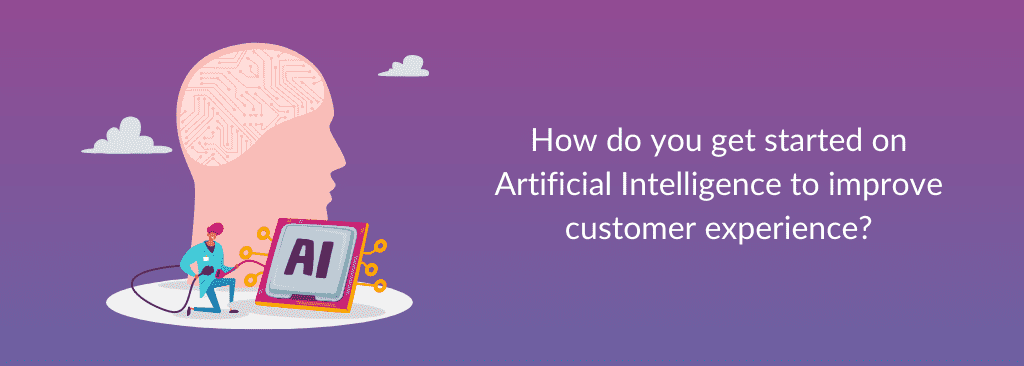How Do You Get Started On Artificial Intelligence to Improve Customer Experience?
When it comes to Artificial Intelligence (AI), there is a school of thought that it would take away jobs and replace human beings. There is another school of thought where people think AI can perform almost anything under the sun.
The AI strategy will have to be carefully thought out, and the customer should be at the center of the thought process. AI definitely would help improve the customer experience in collaboration with the human elements.
How do your go about implementing AI for customer experience?
I have provided my thoughts on how the AI journey should be planned. Often, you can start with low-hanging fruits before progressing to the advanced AI objectives.
Before getting there, let us look at how organizations have taken to AI. This is from McKinsey’s study on ‘The state of AI in 2021.’
AI Adoption
- 56% of enterprise respondents report AI adoption in at least one function, up from 50% in 2020
- Across regions, the adoption rate is the highest in Indian companies, followed closely by those in Asia-pacific
- The top three use-cases of AI adoption are service-operations optimization, AI-based enhancement of products, and contact center automation
- AI’s impact on the bottomline is growing. 27% of the respondents reported at least a 5% increase in earnings due to AI initiatives
- About 10% reduction in costs is reported by most respondents
- Nearly 2/3rd of the respondents say that their companies’ investments in AI will continue to increase over the next three years
How Do You Approach AI Implementation?
You don’t implement artificial intelligence just because the technology exists. Instead, the three key things that you should do include:
- You need to approach it with a clear business goal or need in mind
- Identify the potential application (use cases) of AI in your business
- Deep dive and identify the most valuable AI priorities for your business
Some examples of AI objectives may include – freeing up your agents’ time, improving health & safety, reducing employee turnover, or solving a business problem.
Once you define your objectives, identify the metrics to measure to track progress against your objectives.
You should be able to transform your objectives into use cases. The examples of use cases could be making your products more intelligent, building a deeper understanding of your customers, making business processes more intelligent, automating core business functions, and automating repetitive tasks.
How Do You Prioritize These Use Cases for Implementation?
You shouldn’t have more than two or three strategic use cases at any point in time – the most significant opportunities for your business, or will help solve the biggest problems for your business
Better still, focus on one use case before moving to the rest.
If you are just starting, start with a short-term AI project that is relatively quick, easy, and inexpensive to implement. This would help you demonstrate the value of AI, win people over, and sow the seeds for your more significant AI projects.
AI – Case Example
In April 2020, the call volumes at one of our banking customers went up drastically. So, their time to resolve customer queries went up, affecting their customer satisfaction scores.
They decided to automate some customer service processes, but there wasn’t any consensus on
what could be automated.
Our Voice analytics solution threw up all the repetitive transactional queries that the customers sought. This acted as the low-hanging fruit, which the bank decided to automate.
They built the intelligence to handle repetitive tasks by integrating their core banking solution and integrating it with their chatbots. Now, the chatbots could take 80% of their repetitive queries. They provided an option for their customers to talk to an agent at any point, which made the customers very comfortable.
This automation freed up their agents’ time considerably, and the customer satisfaction scores improved by 45% within two months.
Consumers still value the human touch despite advancements in technology enablers like AI and ML engines.
85% of consumers still rate skilled and knowledgeable contact centers and retail store agents as key to an excellent customer experience from Telcos.
The trick is to find a combination of human experience and AI-driven solutions that are domain-specific to drive the value in customer experiences.
